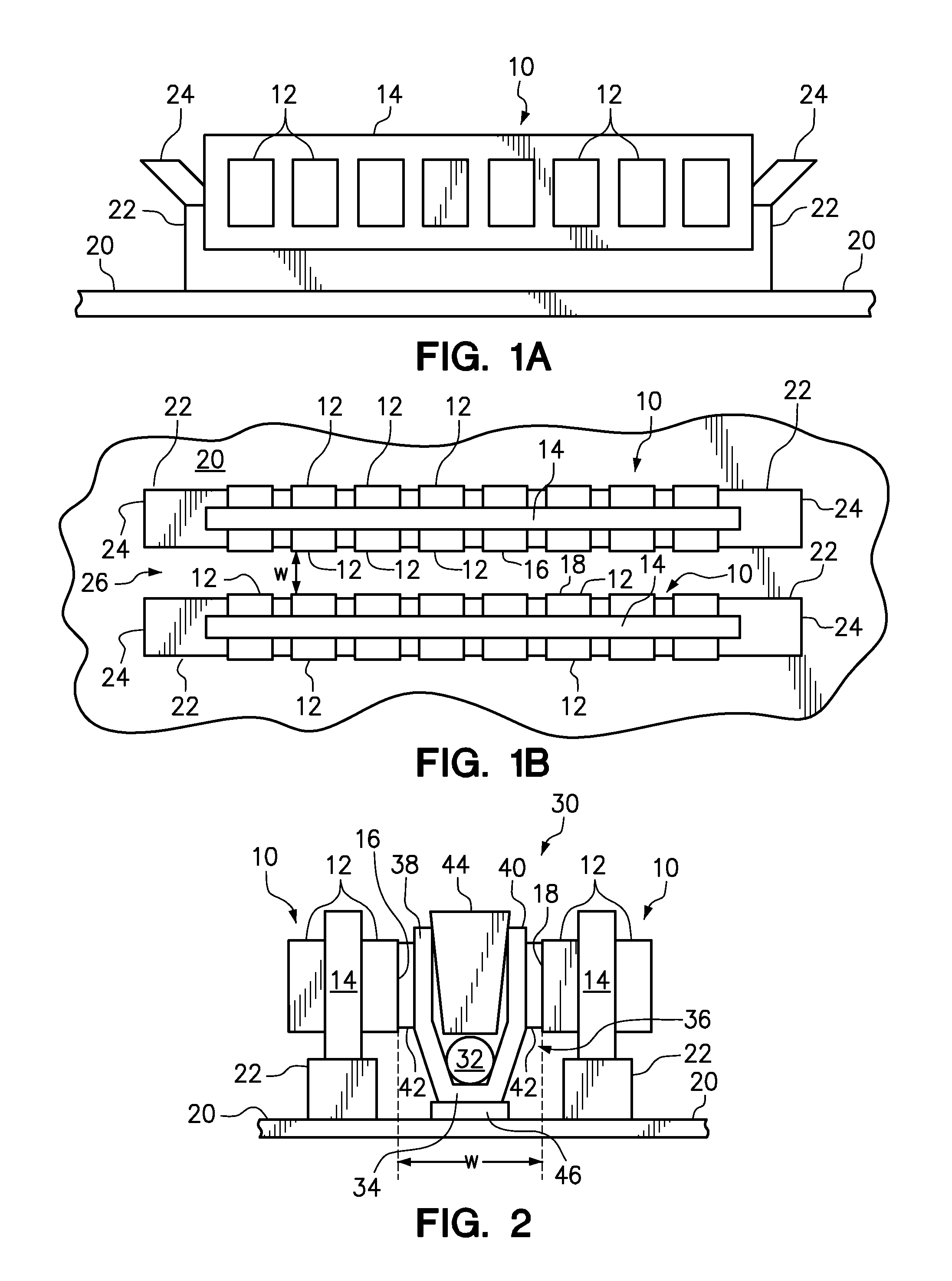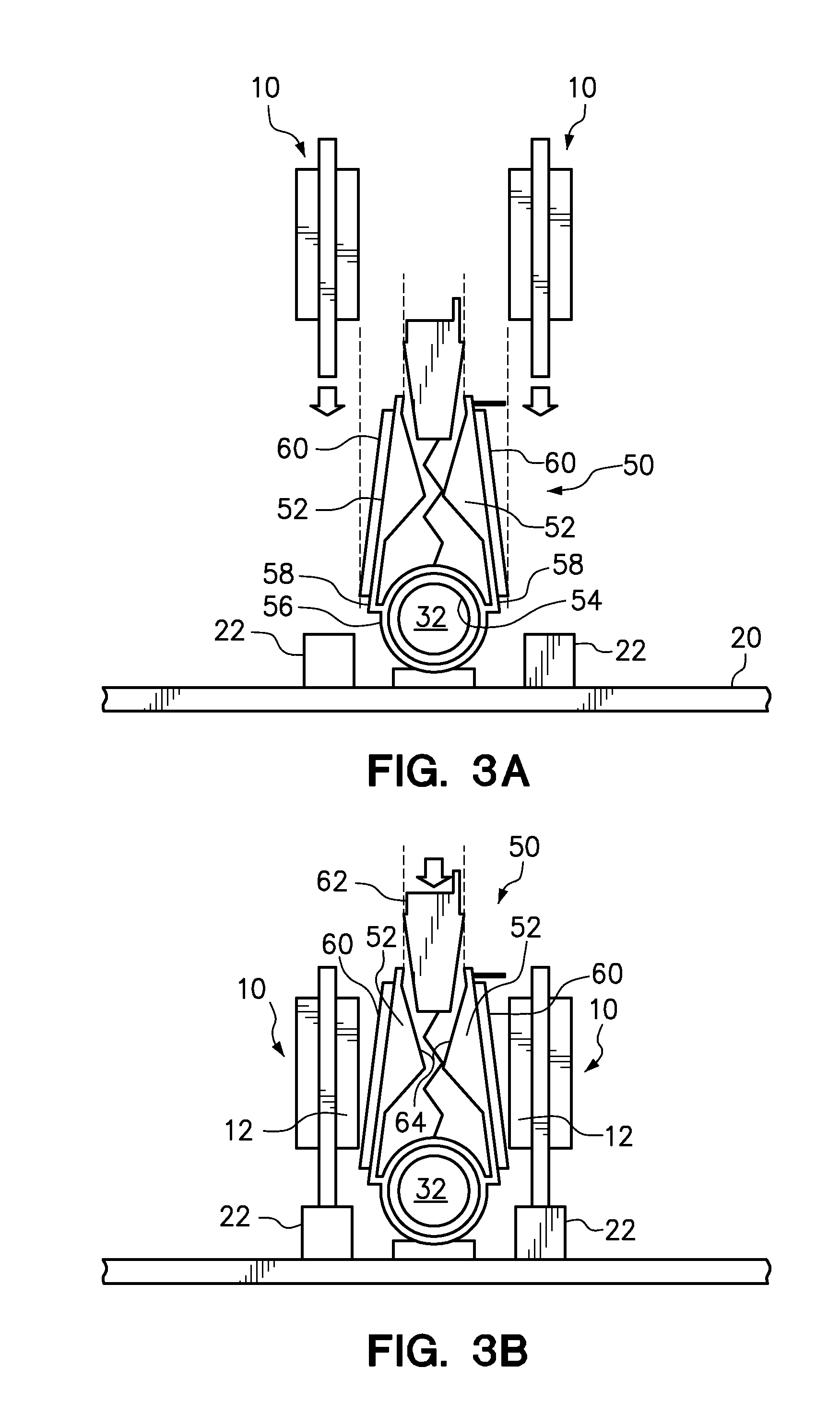System for cooling memory modules
a memory module and cooling technology, applied in the direction of insulated conductors, power cables, cables, etc., can solve the problems of increasing the number of heat generating components, affecting the structural and data integrity of the computer system, and increasing the cost of air cooling solutions,
- Summary
- Abstract
- Description
- Claims
- Application Information
AI Technical Summary
Problems solved by technology
Method used
Image
Examples
Embodiment Construction
[0016]One embodiment of the present invention provides an apparatus for cooling first and second adjacent DIMMs, wherein the apparatus comprises a liquid conduit, a thermally conductive base, and first and second thermally conductive elements. The liquid conduit extends along at least one end of the first and second adjacent DIMMs, and the liquid conduit is adapted for circulating a cooling liquid. The thermally conductive base extends along a gap between the first DIMM and the adjacent second DIMM, and the thermally conductive base has an end in thermal communication with the liquid conduit. The first thermally conductive element provides thermal conduction from a surface of the first DIMM to the thermally conductive base and the second thermally conductive element provides thermal conduction from a surface of the second DIMM to the thermally conductive base. The first and second thermally conductive elements also provide an adjustable span to accommodate variations in distance bet...
PUM
 Login to View More
Login to View More Abstract
Description
Claims
Application Information
 Login to View More
Login to View More - R&D
- Intellectual Property
- Life Sciences
- Materials
- Tech Scout
- Unparalleled Data Quality
- Higher Quality Content
- 60% Fewer Hallucinations
Browse by: Latest US Patents, China's latest patents, Technical Efficacy Thesaurus, Application Domain, Technology Topic, Popular Technical Reports.
© 2025 PatSnap. All rights reserved.Legal|Privacy policy|Modern Slavery Act Transparency Statement|Sitemap|About US| Contact US: help@patsnap.com



